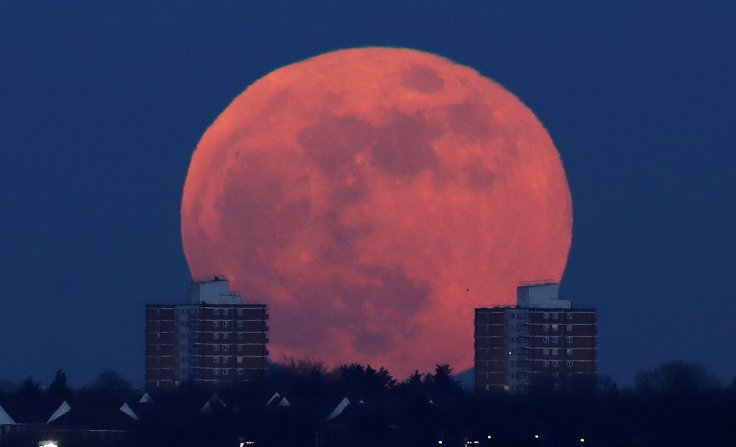
Sky gazers are all set to enjoy the glimpse of a celestial event this weekend as the Moon will reach perigee, which is the point in its elliptical orbit where it is closest to Earth, on Saturday, March 29.
Supermoons are known for their ability to appear in the sky as larger-than-normal bright orbs and for offering some fantastic astrophotography chances.
The supermoon on March 29 occurs when the Moon is in its new phase, which is when its night side faces Earth directly. Only in areas where the night sky isn't obscured by artificial lighting on Earth's surface will it be fully dark and visible.
Usually, new supermoons don't make headlines, but the one on March 29 is unique. You must be wondering how?
Well, a partial solar eclipse, in which the Moon partially obscures the Sun's disk as it passes in front of it, will occur in the Northern Hemisphere on the same day. This will result in a rarely seen crescent Sun that resembles a set of horns in the sky. The term 'devil horn' is typically used to describe such an eclipse.
A peculiarity of the shifting distance between Earth and the Moon is that supermoons are really somewhat often.
The two bodies are 384,400 kilometers (238,855 miles) apart on average. However, the Moon's orbit around Earth is not a circle; rather, it is oval, meaning that it is sometimes closer (perigee) and sometimes farther (apogee).
Perigee is 363,396 kilometers long on average. The average apogee distance is 405,504 kilometers.
Every year, there are roughly 12 to 13 lunar perigees. However, not all perigees are supermoons. The term 'supermoon' is used only to refer to the full or new Moon at perigee, despite the fact that it lacks a clear astronomical definition.
For good cause, everyone's attention is focused on the full supermoon. Even though there are five new supermoons in 2025 as opposed to three full ones, they are difficult to see because the new Moon is in its dark phase, when its night side turns toward Earth, and all we can see, if anything at all, is a faint shadow against the sky.
On March 29, there will be something to see this time. In reality, three things are happening, and they are not all happening at the same time. At 10:58 UTC on March 29, the new Moon will reach its zenith. On March 30 at 05:26 UTC, the Moon will reach the apex of perigee, when it will be 358,128 kilometers from Earth.
The biggest eclipse will occur at 10:47:18 UTC, near the new Moon. From northwest Africa, the Moon's shadow will move across the northeastern United States, eastern Canada, Greenland, and portions of Europe and Russia.
You can view it live if you're not in any of these locations by using the Royal Museums Greenwich livestream, which is embedded below.
The dates of the final three new supermoons of 2025 are April 27, May 27, and June 25. Although there will be a partial eclipse on September 21 that can be seen from New Zealand and Antarctica, there are regrettably no solar eclipses on those days.
On October 7, when the Harvest Supermoon will be 361,458 kilometres from Earth, we will be able to witness a full supermoon. At 356,980 kilometres, the Beaver Supermoon on November 5 will be the closest supermoon of 2025. Lastly, 357,219 kilometres will separate us from the Cold Supermoon of December 4.
Thus, if you wish to view the Moon resting in the sky like a shiny, well-fed, glossy spider amid a web of stars, don't forget to make a note of the dates.









